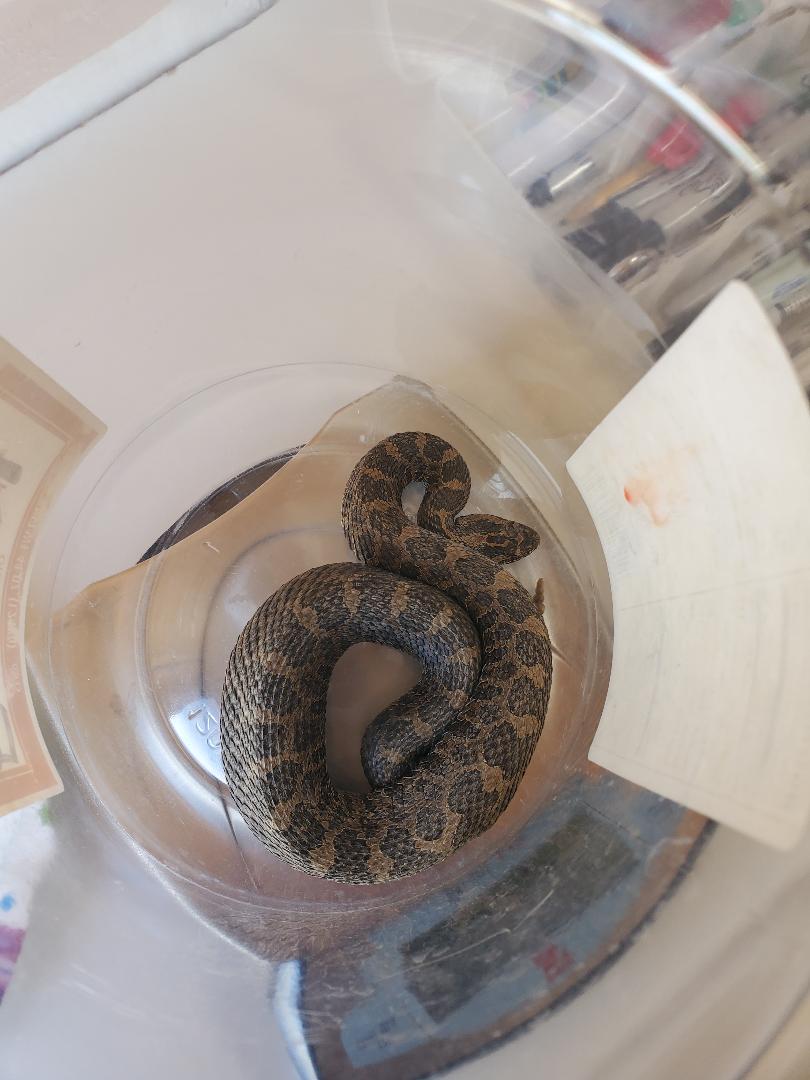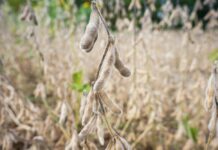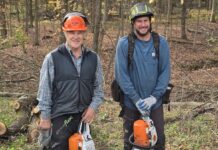
Is there that one thing that you really dread? A spider dangling from the ceiling and landing on your shoulder? Does flying give you cold sweats? How about snakes? Are they the ones that send you break-dancing in the opposite direction? There’s a difference between respect, fear of the unknown and a phobia. One is based on learning, one on lack of knowledge and the last is an anxiety disorder.
Johns Hopkins Medicine estimates that 19 million Americans have at least one phobia, ranging from mild to severe. In fact, they claim that about 9% of adults in the U.S. have experienced some degree of a specific phobia in the last year. If spiders, flying or snakes are the ones that put you on edge, you’re suffering from one of the three most popular of the unpopular.
Thankfully, since I don’t suffer from ophidiophobia, I was able to attend a recent snake survey at Killdeer Plains Wildlife Area in Wyandot County. It was conducted by several partnering agencies: Ohio Department of Natural Resources Division of Wildlife, Ohio Northern University, Cleveland Metroparks Zoo and Ohio State University. Helping out was a wide sampling of volunteers, which included students, faculty members, research specialists, division employees and one retired game warden who was remembering that Killdeer is home to one of Ohio’s three poisonous snakes, the massasauga rattlesnake. The other two, also pit vipers, are the copperhead and the timber rattlesnake.
The idea was to separate into teams and systematically walk assigned segments of a pre-designated area. When a snake was spotted, it would be grabbed carefully (for both the snake’s and handler’s benefit), bagged with an identification tag attached and a marker placed at the spot it was captured. They were then transported back to an examination site where a team of experts would take a vent sample, an area at the south end of the snake. More about that in a moment. They’d each be weighed, measured and have a small pit tag implanted. They were then returned and released at their original capture site.
The importance of snakes
So, why’s everyone going to so much trouble to study snakes? John Daugherty, friend and longtime wildlife biologist, would often say that “Most people don’t care about wildlife that aren’t furry or can’t blink.” I would often laugh at that idea, but he’s right. The average gardener who would go to great lengths to deter or live-trap a marauding rabbit wouldn’t think twice about slamming a shovel down on a snake in the flower bed.
Wildlife is an important part of our lives, sometimes in ways we have yet to understand. Along with native plant species and how they interact, this “team” contributes to the stability of various natural processes and helps maintain a healthy ecosystem – something often referred to as an ecological balance. In turn, this promotes biodiversity, an area that supports a variety of plant and animal species. There’s also the cultural and economic importance, possibilities of medical research, the benefits to mental health and so much more.
The results

This takes me back to the south end of those snakes. I mentioned that a sample was being taken from the vent of the reptiles. This was done by a small Q-tip that was then was placed in a labeled container. The question is, why was this group of experts collecting samples of snake poop?
Unfortunately, it isn’t to check their diet. Of concern is something called Cryptosporidium serpentis (C. serpentis), a protozoal parasite that infects the gastrointestinal tract of snakes. This isn’t like the upset belly that humans or other mammals suffer from a crypto outbreak. The type that inflicts snakes remains chronic and can be deadly.
Katherine “Kat” Krynak, PhD., an associate professor of biology at Ohio Northern University, is one of the people at the forefront of the research efforts at Killdeer Plains. Her concern is that C. serpentis, which has been primarily a captive snake issue, has made its way into our native wildlife species and specifically at Killdeer. That’s not good news, and she presented these concerns at Ohio’s annual Wildlife Diversity Conference held last March.
During this ongoing study, C. serpentis has been detected in 10.4% of snakes and in three of the seven snake species sampled, including two threatened species. While this is concerning, the goal is to find out if infected wild snakes can live with the parasite and to use the ongoing long-term snake population surveys to discover insights into potential parasite influences on wild populations.
The results. Back to the snake-grabbing part of the survey. Killdeer Plains contains remnants of the once-abundant prairie foundations in areas of Ohio’s frontier. The tall grass, brambles and mud make for an interesting walk. Before heading out, I was speaking to Doug Wynn, a Logan County resident with a penchant for venomous snakes. “You know, I’ve never seen one of those threatened massasauga rattlesnakes that are supposed to be around here,” I casually said.
Doug, a friendly guy who loves talking snake, was surprised. “You’ll see them today, and I’ll make sure you have one in your hands,” he said with a smile. I thought he was kidding — he wasn’t.
I was placed in one of the survey groups, we drove out to our search site and the hunt was on. It wasn’t long before the first person hit the ground. She hadn’t fallen but had jumped to grab a common garter snake. It was quickly bagged. Not long after, I spotted a smooth green snake and made a grab and missed, but it couldn’t escape a quick search and snatch by the Division of Wildlife’s District 2 boss, Scott Butterworth. Soon, another group found a threatened Kirtland’s snake with its beautiful copper-colored belly.
I went back to the set-up site where others waited for the snakes at an examination table. Division of Wildlife biologist Eileen Wyza got the dung-duty and pit tag work. Eileen specializes in wildlife of special concern, and the snake in her hand seemed to have a special concern about a particular Q-tip. A pit tag is a very small passive transponder that’s injected just under the skin, which then heals quickly. She examined, weighed and measured each captured snake; then, using a small hand-held scanner, she checked to see if it had been pit tagged in the past – if not, it got one. Once released, if recaptured in future surveys, the tag allows for the individual snake to be monitored for health, movement and survival rates.
As I marveled at this scientific study and the total lack of ophidiophobia in the large group and its helpers, I heard Doug Wynn say, “Here you go,” as he carefully opened a bag and dropped a massasauga rattlesnake on the ground between us. He nudged it gently with a special snake stick, directing its head toward a plastic tube held by a set of snake tongs. “I need a bigger tube,” he grinned as someone handed him another. Soon, the rattler slipped its head inside and crawled in, allowing the biting end to be controlled. He preferred to do the rear exam and tagging himself, keeping any risk as his own.
It was also time for me to grab my first rattler. Before doing so, Wynn casually mentioned that the last human snakebite fatality in Ohio happened in 1947. I think he meant that to be reassuring.
“Fear has its use, but cowardice has none. I may not put my finger into the jaws of a snake, but the very sight of the snake need not strike terror into me.”
— Mahatma Gandhi












